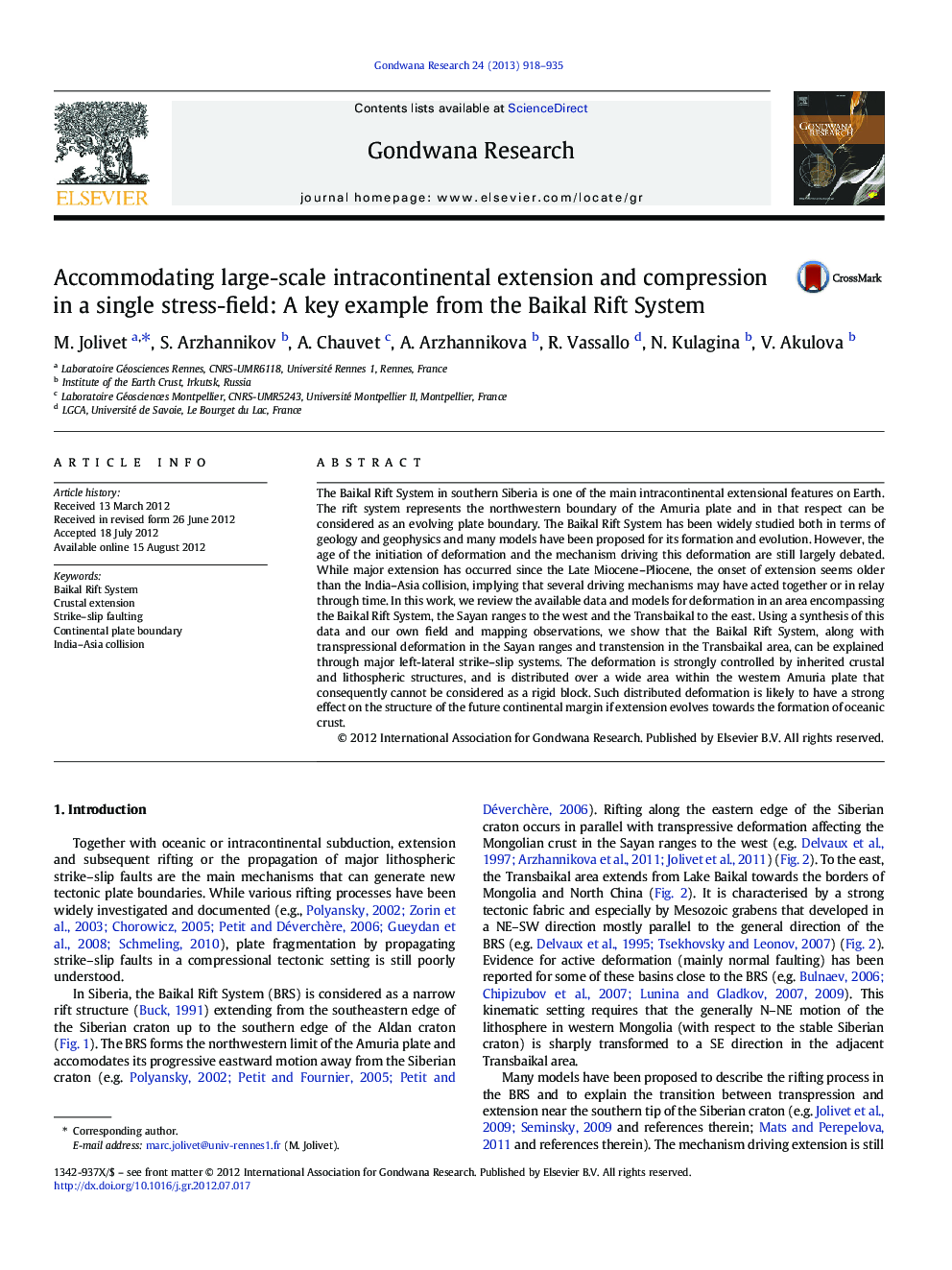| Article ID | Journal | Published Year | Pages | File Type |
|---|---|---|---|---|
| 4726910 | Gondwana Research | 2013 | 18 Pages |
The Baikal Rift System in southern Siberia is one of the main intracontinental extensional features on Earth. The rift system represents the northwestern boundary of the Amuria plate and in that respect can be considered as an evolving plate boundary. The Baikal Rift System has been widely studied both in terms of geology and geophysics and many models have been proposed for its formation and evolution. However, the age of the initiation of deformation and the mechanism driving this deformation are still largely debated. While major extension has occurred since the Late Miocene–Pliocene, the onset of extension seems older than the India–Asia collision, implying that several driving mechanisms may have acted together or in relay through time. In this work, we review the available data and models for deformation in an area encompassing the Baikal Rift System, the Sayan ranges to the west and the Transbaikal to the east. Using a synthesis of this data and our own field and mapping observations, we show that the Baikal Rift System, along with transpressional deformation in the Sayan ranges and transtension in the Transbaikal area, can be explained through major left-lateral strike–slip systems. The deformation is strongly controlled by inherited crustal and lithospheric structures, and is distributed over a wide area within the western Amuria plate that consequently cannot be considered as a rigid block. Such distributed deformation is likely to have a strong effect on the structure of the future continental margin if extension evolves towards the formation of oceanic crust.
Graphical abstractFigure optionsDownload full-size imageDownload as PowerPoint slideHighlights► Deformation is explained by sinistral strike–slip faulting in a major shear zone. ► Extension in SE Siberia is widespread in the Transbaikal region. ► Lithospheric and crustal inherited structures play a major role. ► Initial extensional deformation in SE Siberia is older than the India–Asia collision.
